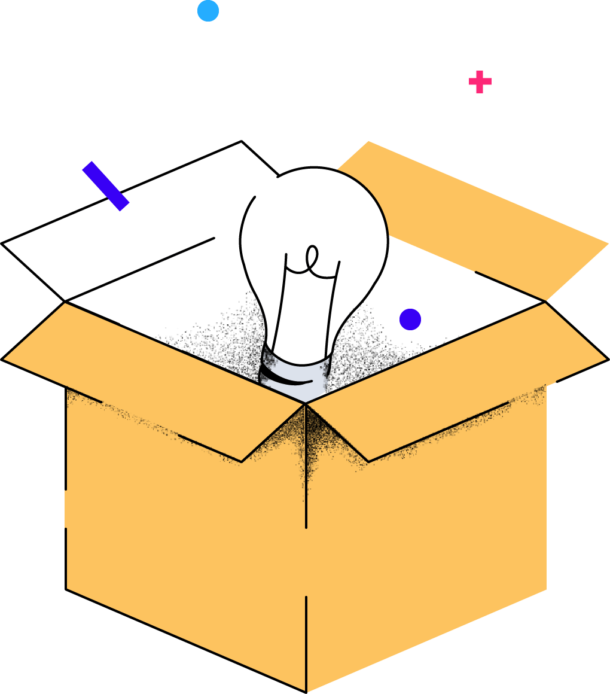Table of Contents
Introduction
The Importance of Idea Categorization in Idea Management
Top Ideas Classification
How to Improve Idea Clarity
Enhance Yours Idea with a Simple Template
Conclusion
Introduction
In the world of innovation and project management, ideas are the seeds that grow into successful ventures. However, not all ideas are created equal, and the ability to effectively categorize and organize these ideas is what often separates success from failure. Idea categorization strategies are essential tools in managing the flow of creative thought, ensuring that every idea is given the appropriate attention and action.
Idea categorization involves systematically grouping ideas based on specific criteria, such as feasibility, impact, urgency, or alignment with business goals. By employing effective idea categorization strategies, individuals and teams can improve the clarity and focus of their brainstorming sessions, making it easier to prioritize and develop the most promising concepts. In this blog post, we will explore the importance of idea categorization in idea management, discuss top ideas classification strategies, and explain how proper categorization can improve idea clarity.
Understanding and implementing robust idea categorization strategies can transform the way you approach idea management, leading to more efficient decision-making and a greater likelihood of project success. Whether you’re an entrepreneur, project manager, or part of a creative team, mastering these strategies is key to optimizing your innovation process.
The Importance of Idea Categorization in Idea Management
Effective idea management is not just about generating ideas but also about organizing them in a way that makes them actionable. This is where idea categorization strategies play a crucial role. By categorizing ideas, you can create a clear structure that helps in tracking the progress of each concept, understanding its relevance, and deciding on the next steps.
One significant reason why idea categorization is important in idea management is that it prevents the overwhelming clutter that can occur when dealing with numerous ideas. Without a system to categorize ideas, it becomes difficult to manage them effectively, leading to confusion and potential missed opportunities. Categorization helps streamline the process, making it easier to identify which ideas need immediate attention and which can be revisited later.
Moreover, idea categorization enhances collaboration within teams. When ideas are clearly categorized, team members can easily understand the context and contribute more effectively to discussions and decision-making. This clarity fosters better communication, ensuring that everyone is on the same page and working towards common goals. Categorizing ideas also facilitates better allocation of resources, as it becomes easier to see which ideas are most promising and deserve more focus and investment.
In addition, categorizing ideas can significantly improve the strategic planning process. By grouping ideas according to their alignment with business objectives, teams can ensure that their innovation efforts are directly contributing to the company’s goals. This alignment not only increases the efficiency of the idea management process but also boosts the overall effectiveness of strategic initiatives.
Top Ideas Classification
To effectively manage and develop ideas, it’s essential to apply the right ideas classification strategies. These strategies help in systematically organizing ideas, making it easier to prioritize and implement them. One of the most common classification strategies is based on the idea’s potential impact and feasibility. This involves categorizing ideas into high-impact/high-feasibility, high-impact/low-feasibility, low-impact/high-feasibility, and low-impact/low-feasibility categories. This method helps in quickly identifying ideas that are both actionable and valuable.
Another effective ideas classification strategy is to categorize ideas by their urgency or time sensitivity. This strategy involves sorting ideas into short-term, medium-term, and long-term categories. By doing so, teams can focus on ideas that need immediate action while ensuring that long-term projects are not neglected. This approach also helps in maintaining a balanced pipeline of ideas, ensuring that there is a steady flow of projects in various stages of development.
A thematic approach to classification is also highly effective, especially for organizations that generate a large volume of ideas across different domains. In this strategy, ideas are grouped by themes or categories such as marketing, product development, customer experience, and process improvement. This thematic categorization makes it easier to delegate tasks to specific teams or departments, ensuring that experts in each area can take ownership of relevant ideas.
Additionally, categorizing ideas based on their alignment with company values or strategic goals can be particularly useful in ensuring that the organization stays true to its mission. This strategy involves evaluating each idea against core values or long-term objectives, helping to prioritize ideas that not only offer potential business benefits but also align with the company’s vision.
Lastly, using a priority matrix to classify ideas is a powerful tool. A priority matrix allows you to categorize ideas based on multiple factors, such as effort, impact, and strategic alignment. This visual tool helps in quickly identifying which ideas should be prioritized, providing a clear roadmap for development and implementation.
How to Improve Idea Clarity
One of the main benefits of effective idea categorization is the significant improvement in idea clarity. When ideas are categorized properly, it becomes easier to understand their potential and relevance, making it simpler to communicate them to others and to take action. Improving idea clarity starts with selecting the right categorization criteria that align with your goals and processes.
For instance, categorizing ideas based on their stage of development—such as concept, prototype, testing, and launch—can provide clarity on what needs to be done next. This categorization helps in setting clear milestones and timelines, ensuring that everyone involved knows exactly where an idea stands and what actions are required to move it forward.
Another way to improve idea clarity through categorization is by using a standardized template or framework for recording ideas. This could include fields for the idea’s origin, potential impact, required resources, and possible challenges. By standardizing how ideas are documented, you ensure that each idea is presented clearly and consistently, making it easier to evaluate and compare them.
Furthermore, visual tools such as mind maps or flowcharts can greatly enhance idea clarity. These tools allow you to map out the relationships between different ideas, showing how they connect or overlap. This visual representation not only improves understanding but also helps in identifying gaps or opportunities that may not be immediately apparent when ideas are presented in a linear format.
In addition to these strategies, regular review sessions can also contribute to improved idea clarity. By revisiting and re-categorizing ideas periodically, teams can refine their understanding of each concept, ensuring that the ideas remain relevant and actionable as circumstances change.
Finally, clear communication is key to improving idea clarity. When presenting categorized ideas to stakeholders or team members, ensure that the rationale behind the categorization is explained. This helps others understand the context and importance of each idea, leading to better decision-making and collaboration.
Enhance Your Idea with a Simple Template
To complement the strategies discussed above and further improve your idea categorization process, a simple yet effective template as The New Concepts Tracker can make a significant difference. This template is designed to help users capture, categorize, and organize new ideas or concepts in a structured way, making it easier to improve idea clarity and manage the flow of ideas effectively.
Our template provides a straightforward method for recording key information about each idea, including its origin, potential applications, and any resources or challenges associated with it. By using this template, you ensure that every idea is documented consistently, making it easier to evaluate and prioritize them later on. Whether you’re managing a team or working independently, this template is a valuable tool for keeping your ideas organized and actionable.

One of the key benefits of using this template is that it supports the categorization strategies we’ve discussed, helping you systematically classify ideas based on their impact, feasibility, and alignment with your goals. This not only enhances your ability to track and develop ideas but also ensures that you maintain a clear and organized approach to idea management.
If you’re looking to improve your idea categorization process and ensure that no valuable concept is overlooked, The New Concepts Tracker It’s designed to be user-friendly and adaptable to various needs, making it a versatile addition to your organizational toolkit. By integrating this template into your routine, you’ll be better equipped to capture, categorize, and act on your best ideas, driving greater clarity and success in your projects.
Conclusion
Implementing effective idea categorization strategies is crucial for any organization or individual looking to streamline their idea management process and improve idea clarity. By systematically classifying and organizing ideas, you can enhance decision-making, prioritize more effectively, and ensure that your innovation efforts are aligned with strategic goals.
Whether you use impact and feasibility assessments, thematic categorization, or a priority matrix, the key is to choose the strategies that best suit your needs and workflow. Remember, the ultimate goal of idea categorization is to make your ideas clearer, more actionable, and more aligned with your objectives.By refining your idea categorization process and applying the strategies discussed in this post, you can transform the way you manage ideas, leading to more successful projects and a more innovative organization. Start categorizing your ideas effectively today, and watch as your clarity and productivity improve.





0 Comments